Why Plant Leaves Turn White: 10 Reasons & Fixes
-

- Last updated:
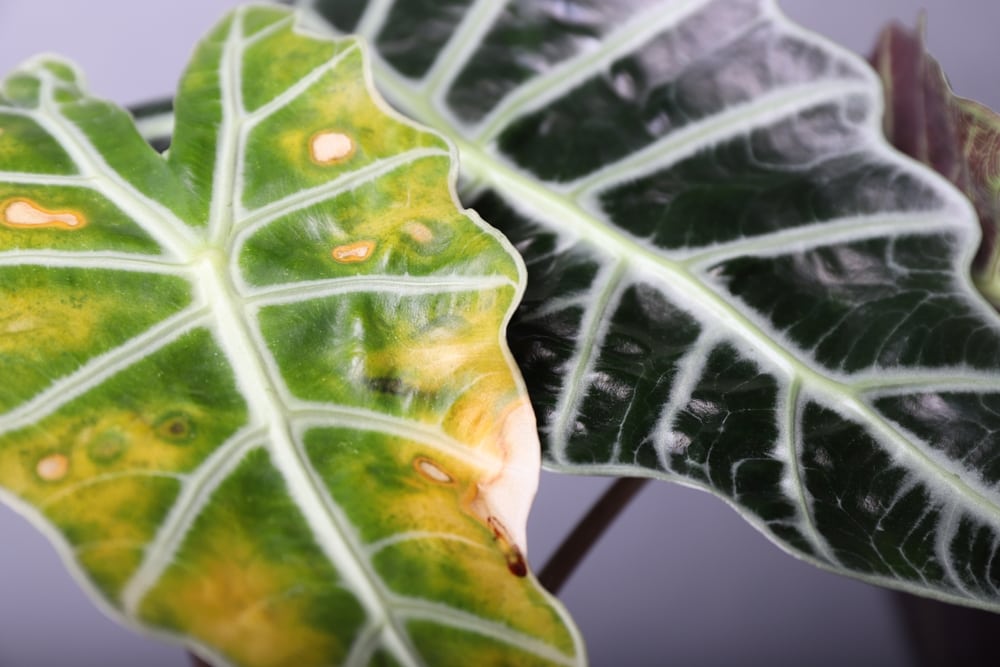
The beautiful greenery show is just one reason plant lovers love plants. It sets a bright but calming space, especially when our plants are lush, healthy, and perky. Every day you arrive home, the spectrum of green puts a smile on your face, but sometimes you spot something different from its usual hue. The green has paled and started turning white, but what could be the reason?
Leaves turning white is not unusual, and there can be various reasons for it. Fortunately, you can also remedy most of them and bring your plants back to life again. We have put together a list of possible reasons plant leaves turn white and how to fix the problem. Let’s have a look.
The 10 Reasons Plant Leaves Turn White
1. Powdery Mildew
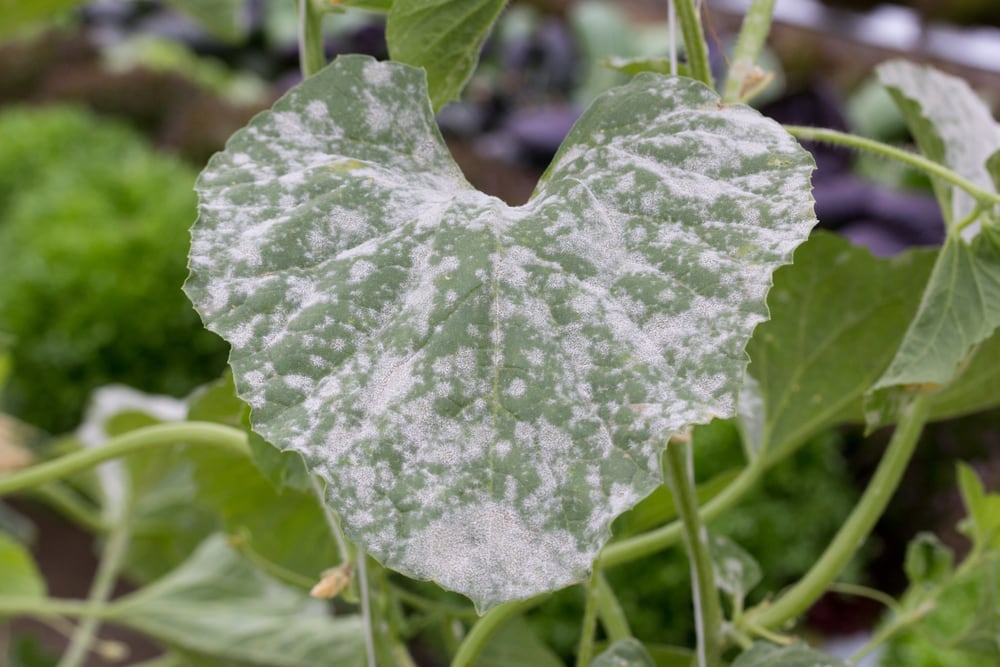
Powdery mildew is a common cause of white leaves. On the surface of the leaves, you’ll notice a white powder-like substance; it is a fungal disease that affects both outdoor and indoor plants. Powdery mildew appears as tiny white spores at first. They begin to spread as the fungus spreads, and the entire leaf surface gradually turns white.
Powdery mildew discolors the plant and weakens it, preventing it from blooming.
The fungal infection is common in overcrowded gardens with excessive shading and poor air circulation. No plant is immune to it, even though it rarely kills the plant.
How To Fix It:
Powdery mildew is simple to identify and, in some cases, easy to wipe away. Proactive prevention is the most effective way to control powdery mildew infection on your plants. The white spots or blotches on plant leaves indicate that the fungus is already present.
The first step is to isolate the plant. Remove the plant from any other houseplants and separate the affected plant. The leaves should be removed and destroyed by burning or throwing them away, and the shears you used should be washed.
If you compost the infected plant, the fungi will likely spread in the compost manure. Horticulture oils can be used to treat the plant; you can try neem oil, which is advantageous to both fungi and pests. It will kill the fungus and aid in the treatment and maintenance of the plant.
Don’t overcrowd your plants. The leaves should not come into contact with one another, and if the soil is wet, stop watering for a while and allow plenty of sunlight to reach the plant. Your plant requires water only when the top 12 inches of soil dries.
2. Low Light

Plants will stretch out to get as much light as possible if they are only given partial light or are completely denied light. The stems elongate to increase the chances of the plant receiving adequate sunlight, resulting in long, weak, and leggy stems.
Although houseplants can grow in low light or indirect sunlight, they require at least 6–8 hours of light to grow. Plants need sufficient light for photosynthesis because insufficient light results in a low production of chlorophyll. The lack of chlorophyll causes the plant to discolor and the leaves to turn white. This is known as chlorosis in plants.
How To Fix:
If possible, remove the shade and trim shrubs and trees that block light from reaching the plants. Excess fertilizer should be avoided if your plants are new, as new growth is more susceptible to infection and over-fertilization hinders controlled growth. Grow lights can be used to meet the light requirements of indoor plants. Install a fluorescent light about 12 inches away from the plant.
3. Nutrient Deficiency
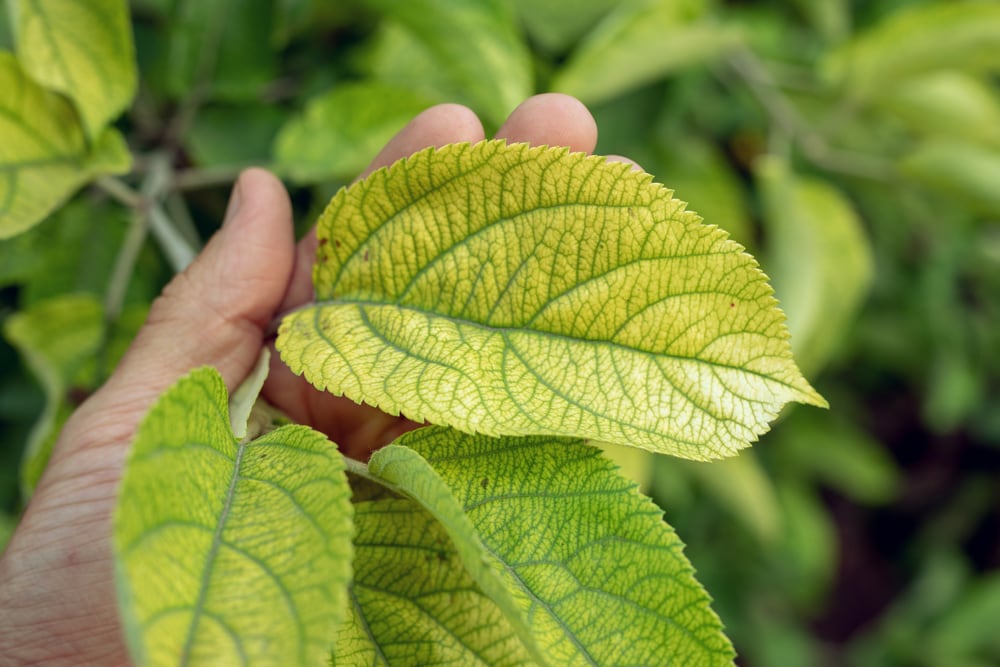
Plants will not produce chlorophyll if iron levels are low and Iron deficiency will reduce the plant’s metabolism. The surface of the leaves will turn yellow with white spots.
A white spot on the upper portions of the leaves indicates that your plant is manganese-deficient. Maintaining the proper level of manganese is necessary because it plays a role in photosynthesis, germination, and immunity.
How To Fix:
When selecting a fertilizer, read the labels to ensure that it contains all the macro and micronutrients. Using the fertilizer will keep your plant healthy and free of spots. Generally, you should fertilize your indoor plants with a balanced liquid fertilizer once a month. If you’re using a slow-release fertilizer, apply it every three months. However, do not fertilize the plant during winter because most plants are dormant.
4. Sunburn
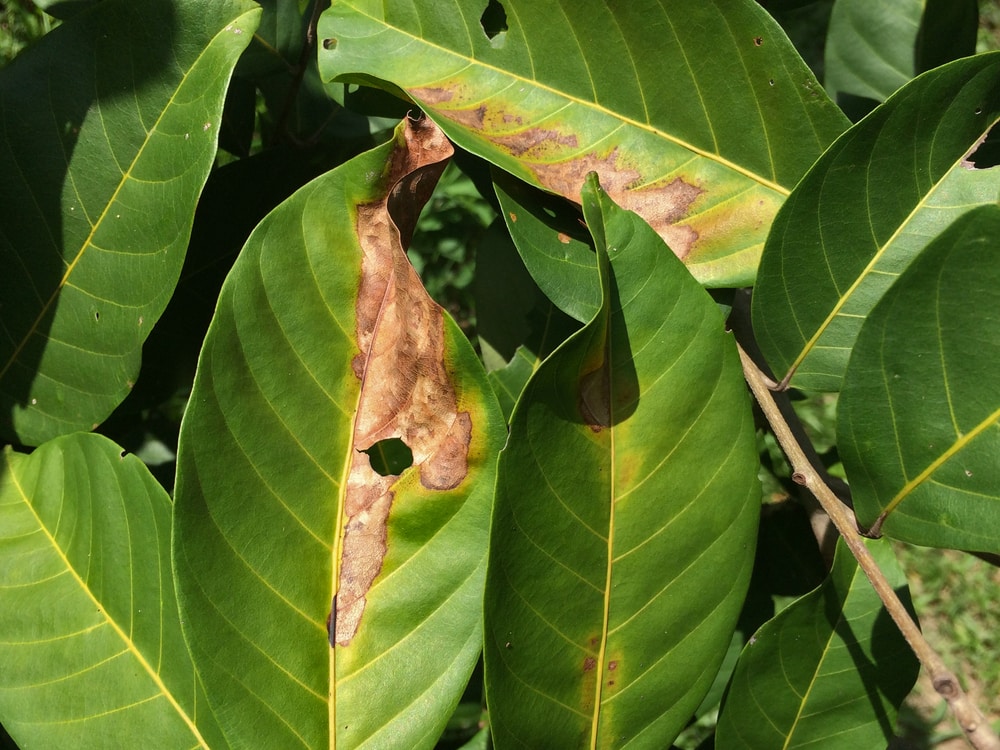
Sun scalding occurs when plants are directly exposed to the sun. Brown spots are the first signs. However, the leaves will develop a white patch with light brown borders over time. This is especially common for perennials in the spring, summer, and fall, as well as annuals after transplanting.
Most of the time, newly transplanted plants are more severely affected because they do not have enough time to become hardy before transplanting. When plants do not have enough time to adjust to the sun’s rays and are still exposed to the sun for long periods, they develop white spots on their leaves and appear to have been bleached. If the leaves are not cared for, they will begin to fall off.
How to Fix:
Think about moving your plant. If you want to keep them in the sun, do so gradually. Begin with short periods of exposure and progressively increase it. This allows the plant to adjust to the sun. Then, you can expose it to the sun for extended periods.
5. Salt Excretion
Excess salts can cause the leaves to turn white. The salts can be found in potting soil or water. Some plants excrete excess salts from their leaves, resulting in white spots on the leaves. The spots gradually grow larger, eventually turning the entire leaf white.
How to Fix:
The white spots on the leaves can be removed by rinsing the plant or wiping it with a wet cloth or plant wipers. Salt also builds up because of over-fertilization. Flushing the soil would be ideal in these circumstances. Wait for the soil to dry out and allow at least 20-30% of the water to drain out of the potting hole after thoroughly watering it. Along with the water, the salt will escape. Allow the water to dry before resuming regular watering.
6. Pest Infestation

White spots or patches on the leaves may indicate that the plant was attacked by pests. Mealybugs are tiny white pests that suck out the plant’s sap. Unless they release a white sticky substance that resembles cotton, it isn’t easy to detect their presence in the leaves. They also expel honeydew, which attracts ants and causes mold to grow on the stems.
Spider mites are small and difficult to see. Check under the leaves for fine web lines; you may visit the mites or their eggs.
How to fix:
If the leaves are affected, prune them to prevent the damage from spreading. You can wash your plant to remove the web lines left behind by spider mites and mealybugs. To get rid of the bugs, you can wipe the leaves with cotton dipped in alcohol or spray them with neem oil.
7. Poor Water Quality
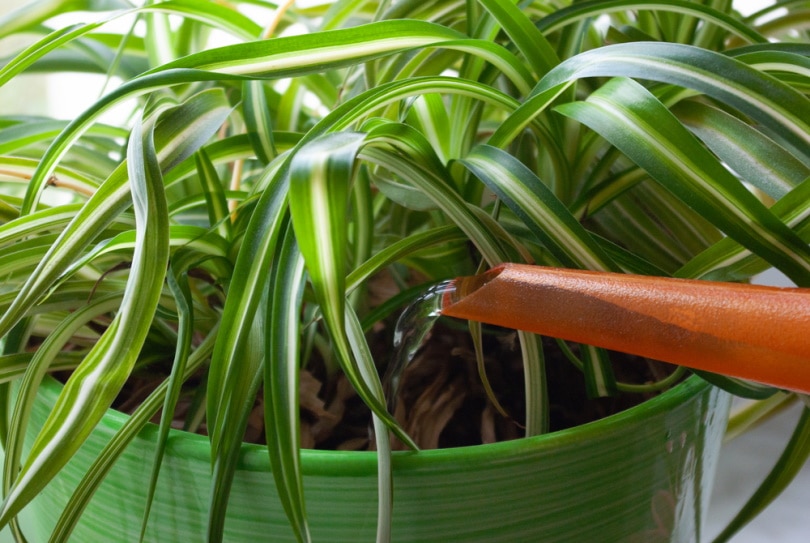
Hard minerals in tap water include chlorine, fluorine, chloramines, and other bicarbonates. When you water your plants, these minerals build up in the soil and on the leaves, resulting in white patches on the leaves.
How To Fix:
The best water for houseplants is filtered or rainwater. They contain no hard minerals. If you have no choice but to use tap water, you should filter it.
8. Alkaline Soil
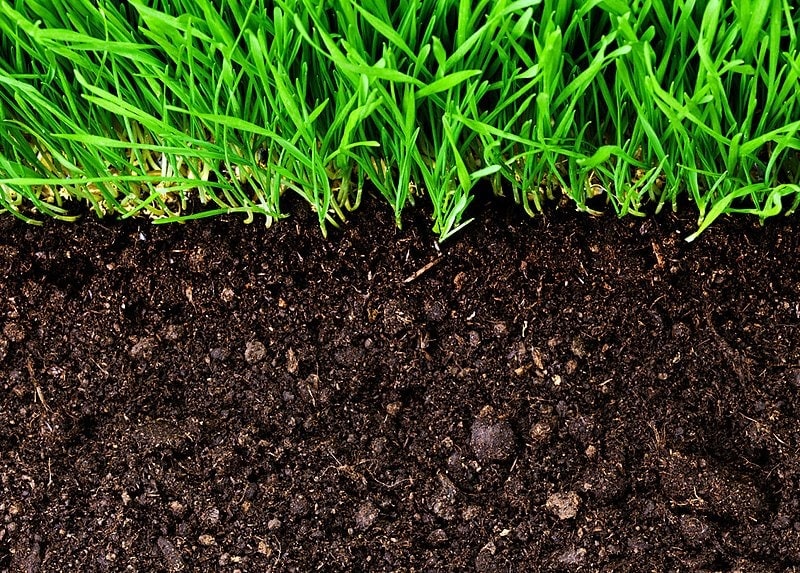
Most houseplants thrive in soil that is slightly acidic to neutral. If the pH is too high, the soil will become alkaline. As a result, the leaves will turn white because plants have difficulty absorbing nutrients even when fertilizer is applied regularly.
How To Fix:
You can solve the pH problem by adding sphagnum moss or coffee grounds to the soil. You can also use acid fertilizer, but first, try home remedies. If you don’t succeed, try the commercial ones.
9. Temperature Stress
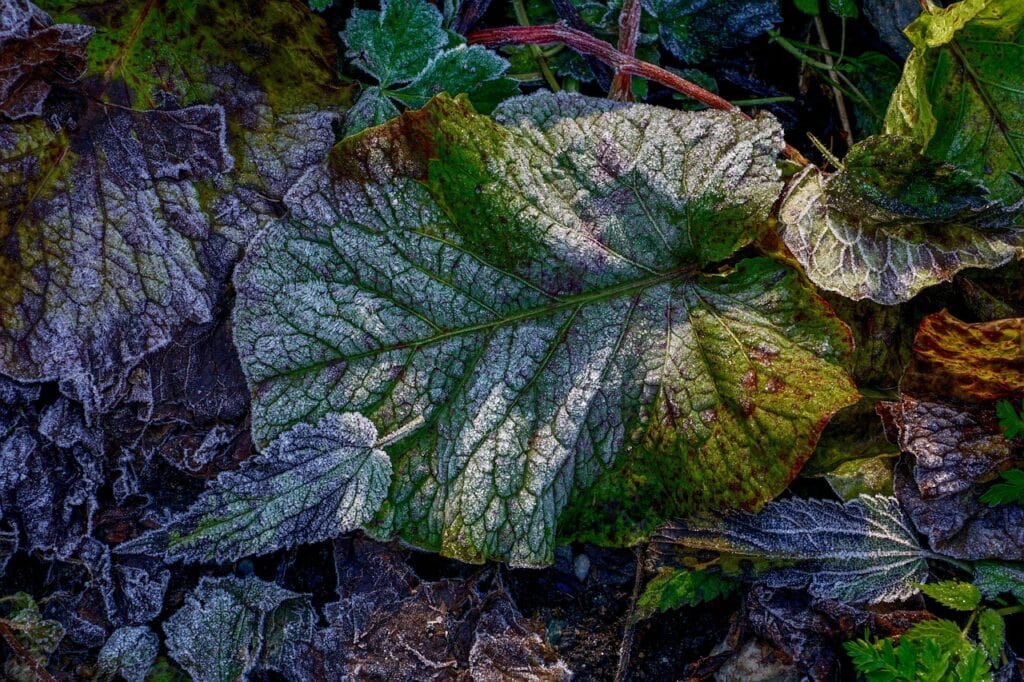
If you notice your houseplant turning yellow or pale white, it can indicate that it is experiencing too many temperature fluctuations. This occurs when the plant is kept near devices such as air conditioners, heaters, or radiators, or when we keep plants near doors and windows that frequently open and close.
How To Fix:
Ensure there are no heaters or air conditioners near your plant. To protect the plant from the cold winds, place it near a window that is open during the day and closed at night.
10. Edema

Edema occurs when you overwater your plant after depriving it of water for an extended period. It gives them a sudden shock which results in leaves that are burnt with white blotches on them.
How To Fix:
The best way to avoid this is to water your plants adequately. Start watering the plant in small amounts after it has been underwatered for a long time. Increase the amount and frequency gradually; this will allow it to adjust.
Conclusion
When your plant’s leaves change color, it is usually an indication that something is off. Analyze your plant carefully to identify what may be causing the discoloration.
Taking care of your plants and keeping them stress-free will always protect them from white spots, and when it comes to pests, prevention is better than the cure. A happy plant requires adequate space, sunlight, water, and nutrients.
See also: Top Reasons Why Jade Plant Leaves Fall Off and How to Fix it
Featured Image Credit: Beagle_studio, Shutterstock
Contents

